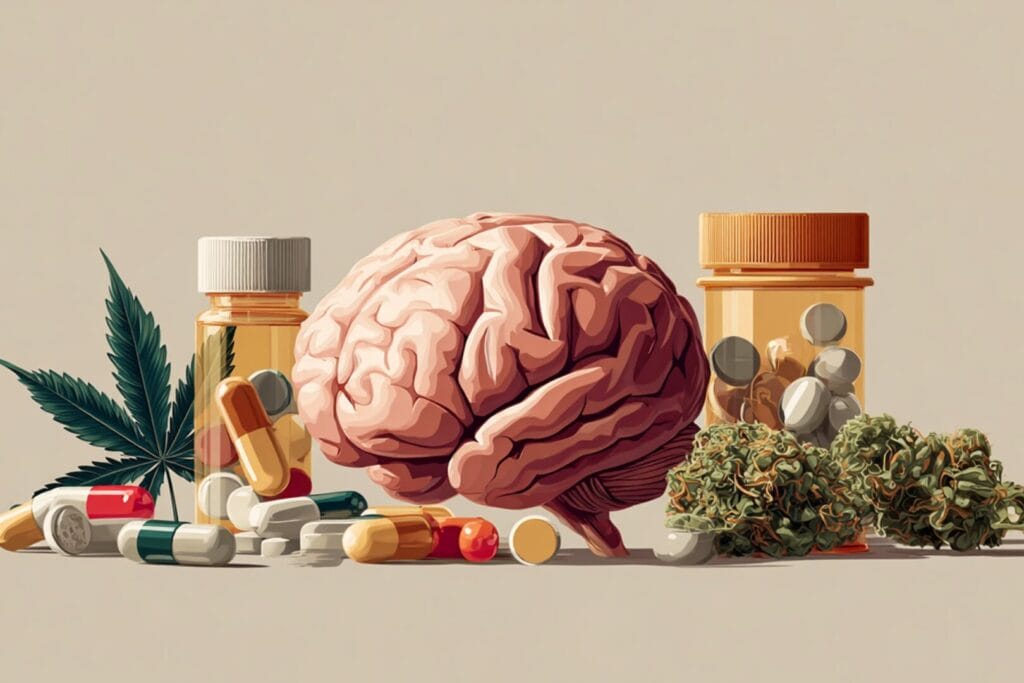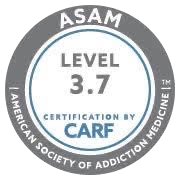What Is Post-Acute Withdrawal Syndrome (PAWS)?
Post-acute withdrawal syndrome (PAWS) describes a collection of symptoms that might linger for weeks or months after quitting an addictive substance. The condition is characterized by signs and symptoms of those like anxiety and mood disorders, such as mood swings, sleeplessness, and elevated levels of worry even in the absence of obvious triggers.1
What Does PAWS Feel Like?
The initial phase of PAWS makes one feel as though they are on an emotional rollercoaster, with mood swings ranging from happy to sad to angry. Though initially debilitating, these symptoms start to fade as a person advances further in their recovery. Individuals affected by PAWS may go a few weeks without experiencing any symptoms, and then wake up one morning with having experienced disrupted or restless sleep, intense exhaustion, fits of impatience, and hostility.
How Long Does Post-Acute Withdrawal Syndrome Last?
PAWS often lasts between six months and two years. How long a person actively used drugs or alcohol, how much was used, if there were any underlying mental diseases present, and prior psychiatric and medical histories can all affect how long they suffer from these symptoms.
Signs and Symptoms of PAWS from Opioids
Some common signs and symptoms of someone experiencing PAWS after opioid use include:
- Insomnia
- Aggression
Anxiety- Depression
- Inability to focus
- Unstable and unpredictable moods
- Panic attacks
- Fatigue
- Poor impulse control
- Drug cravings
Does Opioid Relapse Restart Post-Acute-Withdrawal Syndrome?
Relapse management is a crucial component of ongoing recovery. The brain has developed an abusive pattern as a result of an addiction. Retraining the brain takes time, so it shouldn’t be viewed as a sign that rehabilitation is failing, but rather as a natural part of the process. Being accountable, accepting the circumstances, figuring out the steps that caused it, and discussing it with a therapist or support group is crucial in order to continue recovering.
Many patients wonder if they must restart the recovery process from scratch after relapsing. Usually, the answer is yes, as they will have to go through detox first again, and then start managing other symptoms and side effects that relapsing has created in their body and mind. The road to sobriety cannot be rushed. Retracing their steps can help to emphasize the principles necessary for a successful recovery, along with solidifying important behaviors in order for recovery to be successful.2
How to Treat and Help Prevent Post-Acute Withdrawal Syndrome
There are many ways that one can help treat PAWS, along with some things you or a loved one can do at home. These will be detailed below.
Avoid Potential Causes
Potential relapse causes are essentially inevitable during the rehabilitation process. It’s critical to be aware of the individuals, circumstances, and sentiments that might lead to a relapse. When avoiding these causes is not always an option, group members in a support group, for instance, can assist a person in developing productive coping mechanisms.3
Be Patient
It is important to avoid doing too much and worrying about the future or the past. It can be more helpful to focus on daily self-care and the successes that each day brings.
Self-Care
Self-care supports both physical and mental health, which lowers the likelihood that someone may turn to alcohol or drugs as a coping mechanism. Additionally, when a person is physically and psychologically at their best, it inspires them to strive for their greatest potential
They are more motivated to abstain from drugs and have less of a hard time doing so because they are working toward meaningful goals. As a matter of fact, those in recovery have cited boredom and worry as causes for relapse. Lack of motivational factors like a meaningful purpose in life or connections with people are other potential causes. It is possible to relieve stress and worry and fill time with enjoyable activities by taking care of oneself.
Exercise Regularly
Exercise encourages the brain’s creation of feel-good neurotransmitters that give us a contented feeling. It lessens the likelihood of falling ill and developing certain diseases. Just simply moving is enough; it doesn’t have to be something too demanding or exhausting. Walking is a great kind of exercise.
Assess Co-Occurring Disorders
A dual diagnosis in the context of drug abuse and mental health therapy describes the occurrence of a substance use disorder and one or more co-occurring psychiatric disorders at the same time. When a patient has to deal with both a mental health condition and a substance use issue, they are said to be co-occurring disorders.4
A variety of mental illnesses listed in the American Psychiatric Association’s Diagnostic and Statistical Manual of Mental Disorders (DSM-V), such as schizophrenia, bipolar disorder, depressive disorders, or generalized anxiety disorder may be among the co-occurring psychiatric conditions.4
Getting PAWS Treatment at San Diego Detox
At San Diego Detox, we provide a comfortable and safe environment with intensive programs to give you the best treatment possible. Get help for yourself or a loved one struggling with substance abuse and PAWS. Contact us today.
Causes And Risk Factors of Post-Acute Withdrawal Syndrome
PAWS may occur as a result of changes in the brain’s stress response in that region during addiction. The stress reaction, however, can occur for a variety of causes. Here are a few causes and risk factors of PAWS.
Homeostatic Adjustment
Physical reliance on drugs or alcohol causes changes in brain chemistry over time; without the chemical that causes the release of neurotransmitters and endorphins, the body is unable to achieve homeostasis on its own. Without pharmacological assistance, the brain can take a while to fully regain homeostasis, which can result in mood swings, tiredness, cravings, and other psychological symptoms during PAWS.
Chemical Changes in the Brain
Drugs are, of course, chemicals. They interfere with the body’s communication system and the way that nerve cells process information as soon as they enter a person. For instance, some medications mimic the chemical signals sent naturally by the brain. Others, on the other hand, overcompensate the reward system.
Neurotransmitters significantly return to normal in the early phases of drug use once the intoxication subsides. However, consistent drug abuse alters the neural structure and results in aberrant neurotransmitters that are irreversible.
Physiological Adaptations
The body may adapt to an inflow of medications in other areas to control hormones or digestive processes. This is reflected in withdrawal symptoms; for example, common opioid withdrawal symptoms including nausea, stomach cramps, and diarrhea can occasionally last longer than two weeks until they subside.
Dopamine Shortage
Dopamine, which is responsible for motivation, pleasure, and euphoria, is altered by drugs and alcohol to produce its exact effects. Substances flood the brain with dopamine during active addiction. The brain will eventually stop naturally generating its own dopamine. A significant neurological deficit is left in the brain after substance withdrawal, which results in PAWS symptoms.
Resources
https://www.niaaa.nih.gov/alcohols-effects-health/overview-alcohol-consumption/what-standard-drink
https://www.drugfreeworld.org/drugfacts/alcohol/short-term-long-term-effects.html
https://www.ncbi.nlm.nih.gov/pmc/articles/PMC2913110/
https://www.webmd.com/mental-health/addiction/understanding-alcohol-abuse-symptoms






